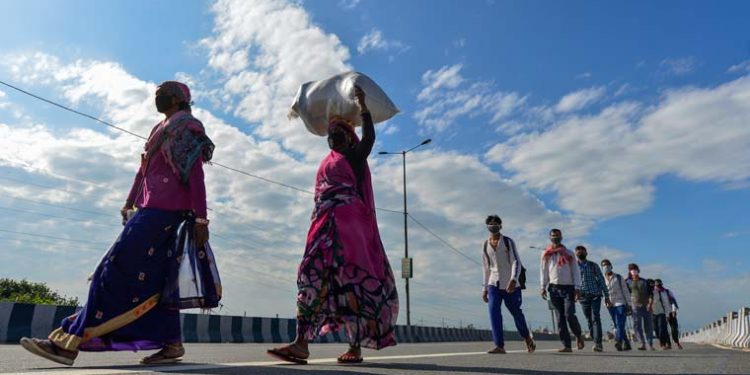The poignant sight of migrant labourers heading home, from one part of the country to another, will be etched in public memory years after the COVID-19 would go behind us. Emaciated people carrying their small belongings as they trudge thousands of kilometers in the absence of public transport, some paddling without food and support, braving torture by policemen on the way, some forced to move on their knees under scorching heat are sights that would refuse to go from collective psyche. Their mournful faces have become emblematic of the COVID-19 disaster.
Reports of migrants dropping dead on their way home, some run over by trains or mowed down on roads also keep coming in. The Indian railways alone has operated 1565 ‘Shramik Special’ trains since May 1 and ferried over 20 lakhs migrants back home. Such massive movement of people from one corner of the land to another was never seen in the country since Partition in 1947. India is not economically uniform. Here, some states like Maharashtra, Gujarat and Tamil Nadu are relatively better-off while some states like Bihar, Odisha and West Bengal are poor. People from eastern side of the country traditionally move to western states and down south in search of livelihood. The per capital annual income op people in eastern states is far less than those of western states. An overwhelming number of people headed to western states do blue-coloured jobs. They live in clusters near their places of work and in slums, shorn of basic health and hygienic standards. When the COVID-19 struck forcing industries and factories to shut shop, these workers were among the first who bore the brunt of the pandemic. They lost their jobs. With hardly any savings left with them, they had no way but to come home. Millions of people have already reached their states, though not homes while millions more are waiting for their turn.
In case of Odisha, some 5 lakh people had initially registered online to come home. Out of this nearly 2 lakh people have come back. Even if the balance people come back, they would comprise only 30 per cent of the total number of people that have moved from the state to other states for livelihood. The migrants issue is an endemic problem in Odisha. Even though people from every district go out for work, some districts like Bolangir, Nuapada, Bargarh and Ganjam account for the bulk of such people. The state government in the past has come out with special packages to address this issue. But such piecemeal attempts have failed to address the issue. Since coronavirus is here to stay, the mankind has to adapt itself to live with the virus. The government must orient a policy infrastructure to this changed reality and resolve the migrant issue once for all. A long term policy initiative is on order. A bulk of the workers going to Surat for livelihood purposes land in textile factories there. The state government can create such opportunities here. Textiles, food processing, manufacturing and MSMEs are labour intensive sectors and can better address the unemployment issues.
Moreover, they do not call for big-ticket investments. Odisha is known for its particular textiles and has a lot of domain knowledge and skills. Putting up right infrastructure for these industries can attract investments. Unskilled and semi-skilled people from rural hinterland of the state can stop going out if the government can ensure setting up of cluster of such industries. Thus, COVID-19 crisis ought to be taken as a wake-up call. The government must shed its obsession with coal and iron industries and renew its focus on sectors like textiles, food-processing and MSMEs. This would ensure outbound workers in the state find gainful employment right here.







































